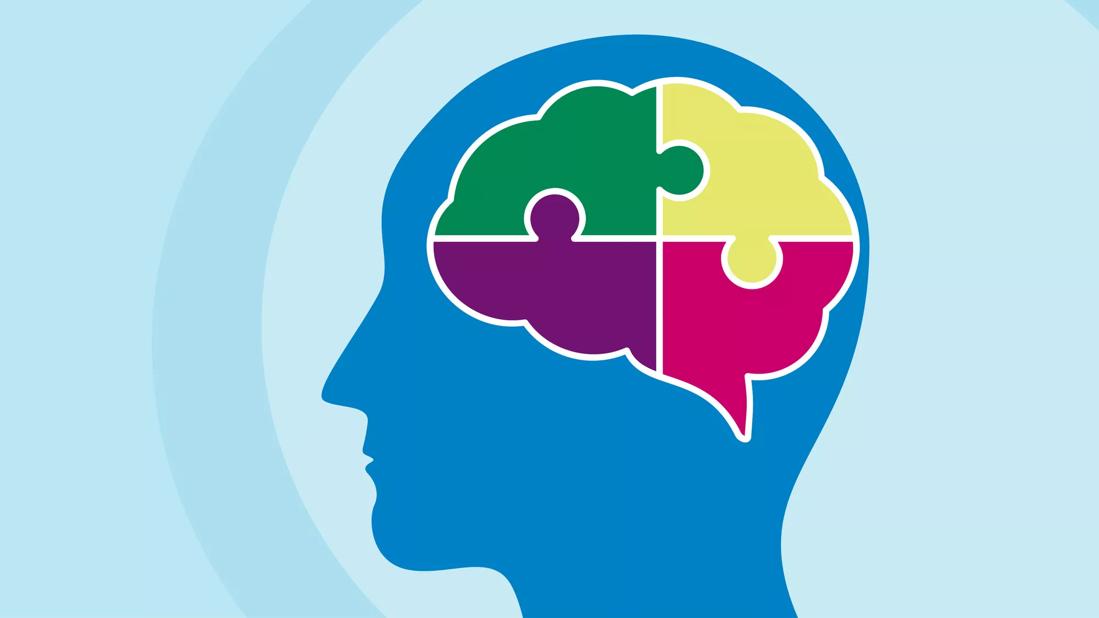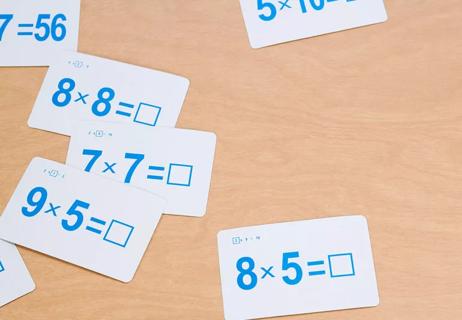Our collective misremembering of events comes from a surplus of false memories

We love a good brain buster, especially if it gets us thinking about things in new and exciting ways. But the Mandela Effect is more than just a mind game. It’s a phenomenon in which participants collectively misremember the specific details of a person, place, situation or event as if it were a reality, when in fact it was not.
Advertisement
Cleveland Clinic is a non-profit academic medical center. Advertising on our site helps support our mission. We do not endorse non-Cleveland Clinic products or services. Policy
According to neuropsychologist Aaron Bonner-Jackson, PhD, the Mandela Effect may happen because of our brains’ ability to create and store false memories. We offer some popular examples of the Mandela Effect that just might blow your mind, along with some possible explanations for the psychology behind the phenomenon.
The Mandela Effect is a social phenomenon in which a group of people incorrectly remember very specific details about a person, place, situation or event as if it were a reality. The term was popularly coined by paranormal researcher Fiona Broome, who shared in 2009 that she had a clear memory of former South African president Nelson Mandela dying while in prison in the 1980s. But what she remembered wasn’t true.
Mandela didn’t die in prison. Instead, he served a 27-year prison sentence and was released in 1990. He went on to serve as the first president of South Africa, from 1994 to 1999 and then died in 2013.
On its own, this instance of misremembering could be summed up as minor confusion or a misrepresentation of the facts. But surprisingly, Broome discovered she wasn’t alone in her vivid recollection of Mandela’s death in the ‘80s. Many others online also remembered Mandela’s death incorrectly and believed he died many years before his actual death.
Advertisement
It’s this collective misremembering that amplifies and characterizes the Mandela Effect.
Examples of the Mandela Effect most often occur in reference to pop culture and historically significant events that have a wider audience and higher chance of interactivity. Some of the most popular examples of the Mandela Effect include:
This animated series, produced by Warner Bros. and starring iconic characters like Bugs Bunny, Daffy Duck and Elmer Fudd, was never named Looney Toons, with two oohs.
Jedis on both sides of the Force might occasionally be compelled to agree, but everyone remembers this incorrectly (Spoiler Alert): When Darth Vader cuts off Luke Skywalker’s hand in Star Wars: Episode V — The Empire Strikes Back, he doesn’t say, “Luke, I am your father.”
Maybe it’s the cursive font choice that threw us for a loop, but a lot of people who grew up on this beloved childhood story collection remember The Berenstein Bears. The family’s name is actually spelled with an “a” not an “e.”
Not to be confused with Mr. Peanut of Planters® fame, but Monopoly™ Man never wore a monocle. Perhaps people misremember this iconic character wearing the accessory because it would be a symbol of money and fortune and pair well with his tiny top hat and coattails.
This one is a little fruity … but despite what you might think you recall, no, Fruit of the Loom™ logo ever had a cornucopia. Instead, it’s a bunch of fruit on a plain white background.
You’re reading that correctly. Our favorite Stone Age family from Bedrock has two t’s in their name — they’ve never been called The Flinstones. It makes sense the more you think about it: Flint is a kind of sedimentary rock.
Walt Disney’s flagship character’s first appearance in the 1928 animated short Steamboat Willie had Mickey Mouse steering the helm. The only thing he’s wearing? A pair of shorts. Mickey Mouse didn’t wear suspenders then and doesn’t now.
Sure, you could throw together a peanut butter and jelly sandwich in a jiffy. But this brand of peanut butter, founded by the J.M. Smucker Co. in 1958, was always called Jif™, not Jiffy.
Pokémon fans may misremember Ash Ketchum’s star favorite Pikachu as having a black-tipped tail. To thunderous applause, Pikachu’s tail has always been stark yellow with brown at the base — not to be confused with its pre-evolution form, Pichu, which does have an all-black tail.
A ‘90s movie starring the comedian Sinbad in the role of a genie who can grant wishes? Sorry, it never existed despite the popular belief of many who’ve sworn they’ve seen it and have had VHS tapes of it when they were kids. More than likely, people may be getting it confused with Kazaam starring Shaquille O’Neal in a similar role. Or it was just a spirited way in an elaborate magic trick — you decide!
Advertisement
Those who experience the Mandela Effect may do so as a result of what Dr. Bonner-Jackson refers to as false memories.
Typically, external stimuli like observations and experiences are processed in your brain as memory to be stored, and your hippocampus is involved in forming new memories. You can then retrieve these memories at a later time upon reflection. But memory is reconstructive, meaning there are a lot of influences on the way we remember things.
“Memory is not necessarily a carbon copy of reality,” explains Dr. Bonner-Jackson. “Memory is influenced by different biases, perceptions, preconceptions and expectations.”
This means memory can change over time as a person gains more information about what happened.
Take, for example, a memory you might have of a specific moment while on vacation with a friend. You both may remember different details about what happened on your trip based on your own perceptions and attention to different details.
Sometimes, false memories can occur when misleading information is provided. Some studies suggest this happens as a result of inflating your own imagination and the way you might receive false feedback. If someone tells you enough times they remember an event a specific way, even if it didn’t actually happen, your brain may convince you to believe in the same memories — what’s called “memory implantation.”
Advertisement
“Just by giving some misleading information, people can actually believe they have a memory that is different than what actually happened,” says Dr. Bonner-Jackson. “I think most dramatically, this happens in some court cases when, if someone has asked a question in a certain way, it may actually lead them to think they remembered something they didn’t actually remember.”
As our memory is reconstructive, we also tend to fill in the gaps with the information that’s provided to us and from our own internal biases when we have trouble remembering specific details.
In one study that examined how we create false memories, people were provided a list of related words and tasked with recalling them. In one list, for example, you might have the words “bed, rest, awake” — all associated with the word “sleep,” which wasn’t listed. Despite not being included, 40% of the time, people remembered the word “sleep” being on the list.
“If someone has information but they don’t have all of it or they don’t know the whole answer, they may misremember or reconstruct the event or situation based on what information they do have and try to fill in what probably happened,” explains Dr. Bonner-Jackson. “I think this comes from people’s need to make sense of the world around us.”
Advertisement
And when these memories are shared with one another, Dr. Bonner-Jackson compares the creation of false memories to the children’s game of Telephone.
“The message starts off one way and then after a while, the message gets muddled,” he illustrates. “Eventually, a lot of people have the wrong message.”
Combining all of these ideas with the innovation of the internet and how fast information spreads on social media, and you’ve got all the right ingredients for the Mandela Effect to occur.
When enough people disseminate the wrong information and play off each other’s collective misremembering, the truth can get buried or lost. Plus. it’s difficult to know whether your memory recall is always reliable.
For starters, there are several conditions that impact memory growth and loss. In many cases, suggestions for improving brain function include a healthy diet, improving your sleep schedule and exercising regularly.
When it comes to investigating the truth behind presumably false memories, Dr. Bonner-Jackson says it’s up to you to determine what’s real and what’s hearsay.
“In many cases, the Mandela Effect deals with benign things. People remember a certain cereal being one way when it was another,” he notes.
“But in more serious cases, I think the biggest thing would be to try and confirm for yourself rather than take someone’s word for it and do some real research.”
Learn more about our editorial process.
Advertisement

When the familiar suddenly feels unfamiliar, it could be nothing — or something worth noting

Decreasing estrogen levels can cause brain fog, but symptoms of dementia are different and more pronounced

Use a gentle, nonjudgmental tone, focus on prevention and reassure them that age-related memory issues can have a variety of causes

The brain areas that process smell are closely connected to those responsible for our memories and emotions

Cardio is great for improving cognition, but strength and balance training are just as important

The difference between normal aging and issues that affect your independence

And 12 easy tips that can pay off big

Those nursery rhymes and song lyrics are worth while

The best parenting style balances enforcing rules and showing plenty of love

Tips include cutting back on sugar, focusing on exercise and managing stress

It can be harder to let go when you’ve invested time, energy and emotions — but it might be the healthier choice long term